What is Agile project management: when and how to use it
Blog: Monday Project Management Blog
Agile project management is a polarizing topic in professional circles.
Some are firm believers in Agile, claiming it helps their teams work faster, reach higher, and exceed goals. They might even go so far as to say that every project should be Agile.
Others complain that it doesn’t focus on the big picture and can lead to disordered final products.
Here at monday.com, we’re somewhere in the middle. We’re not Agile zealots pushing it on all teams for all work. But instead, we use it when it makes the most sense.
In this guide to Agile project management, you’ll learn exactly what it is and how to make the same evaluations, so that you can start adapting it appropriately within your organization.
What is Agile project management?
Rather than a step-by-step framework, it’s a more intangible methodology or even philosophy. The best way to understand it is to learn and internalize its principles.
So let’s jump right in.
What are the key values and principles of Agile project management?
The original Agile Manifesto includes a list of 4 values and 12 principles to guide your process.
These mainly focus on software, but we’ve adapted them for general project management. The 12 Agile principles outline the overall philosophy and methodology quite well.
- Satisfy the customer. Everything you do should be geared towards your target market.
- Don’t fear change. Remain flexible.
- Deliver working versions frequently. For example, work on completing iterations rather than finished products.
- Bring business people and “techies” together. A disconnect between departments leads to a disconnect between your products and your target customers.
- Motivate, trust, and support your team. You can’t force productivity.
- Engage in face-to-face conversation. Make sure everyone feels heard.
- Measure progress with working versions of the final product.
- Encourage sustainable development. Ongoing progress over the long term beats hackathons.
- Pay attention to technical excellence and good design. Agile isn’t an excuse to cut corners.
- Keep it simple. The most fundamental solutions are often the best and most reliable.
- Use self-organizing teams. Autonomy leads to more motivated and productive employees.
- Regularly reflect and review. You can’t learn or progress without evaluating your workflow.
And it’s not just the principles. The Agile Manifesto highlights a few select values that showcase the same philosophy.
The 4 core Agile values are:
- Individuals and interactions over processes and tools
- Functioning end product over comprehensive documentation
- Customer collaboration over contract negotiation
- Responding to change over following a plan
While some practitioners might give off a different impression, there’s nothing “woo” about Agile.
The Agile approach is founded on practical principles and values. It aims to solve the issue of product-market disconnects that plague companies globally.
If you want more context, you can click the links above to read our dedicated posts.
What makes Agile different from traditional project management?
The main difference is the iterative approach and the focus on working closely with the customer to adapt to marketplace changes after launching your project.
Traditional project management is also known as Waterfall because it follows predictable stages. You start with the requirements gathering stage and keep going down until the project is over.
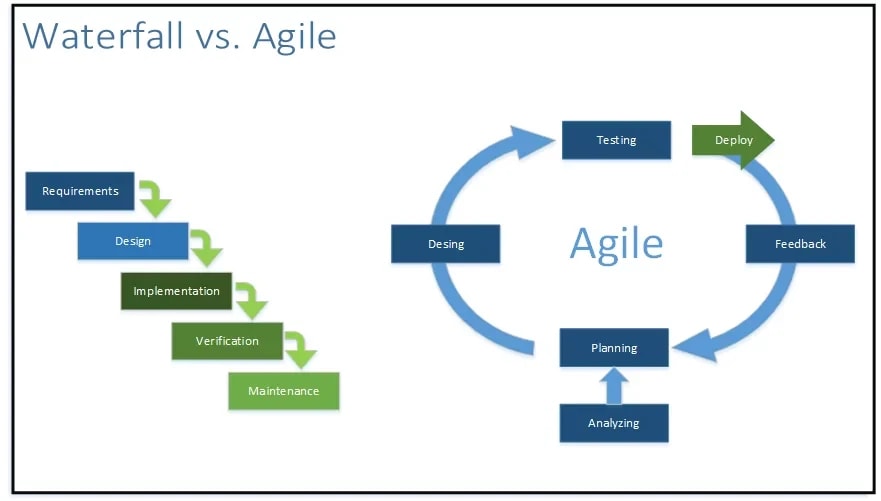
In Agile, you instead cycle through these stages as you work on the project in smaller pieces. Agile teams call this cycle an iteration or Agile sprint.
The focus is on delivering a single, working product increment at a time. You can produce single features or batch logical choices together.
For projects with physical deliverables, you can focus on delivering different stages of a prototype. For example, a 3D-model would be the first goal. Then, an initial physical prototype, and so on.
For a more in-depth breakdown, read our full post comparing traditional project management vs. Agile.
Pros and cons of Agile project management
Agile isn’t all sunshine and rainbows. It has unique upsides and downsides that make it either a good or bad choice for various project types.
Pros
According to the 2020 State of Agile, the main benefits of adopting Agile are improved adaptability, project visibility, business-IT alignment, and a faster speed to market.
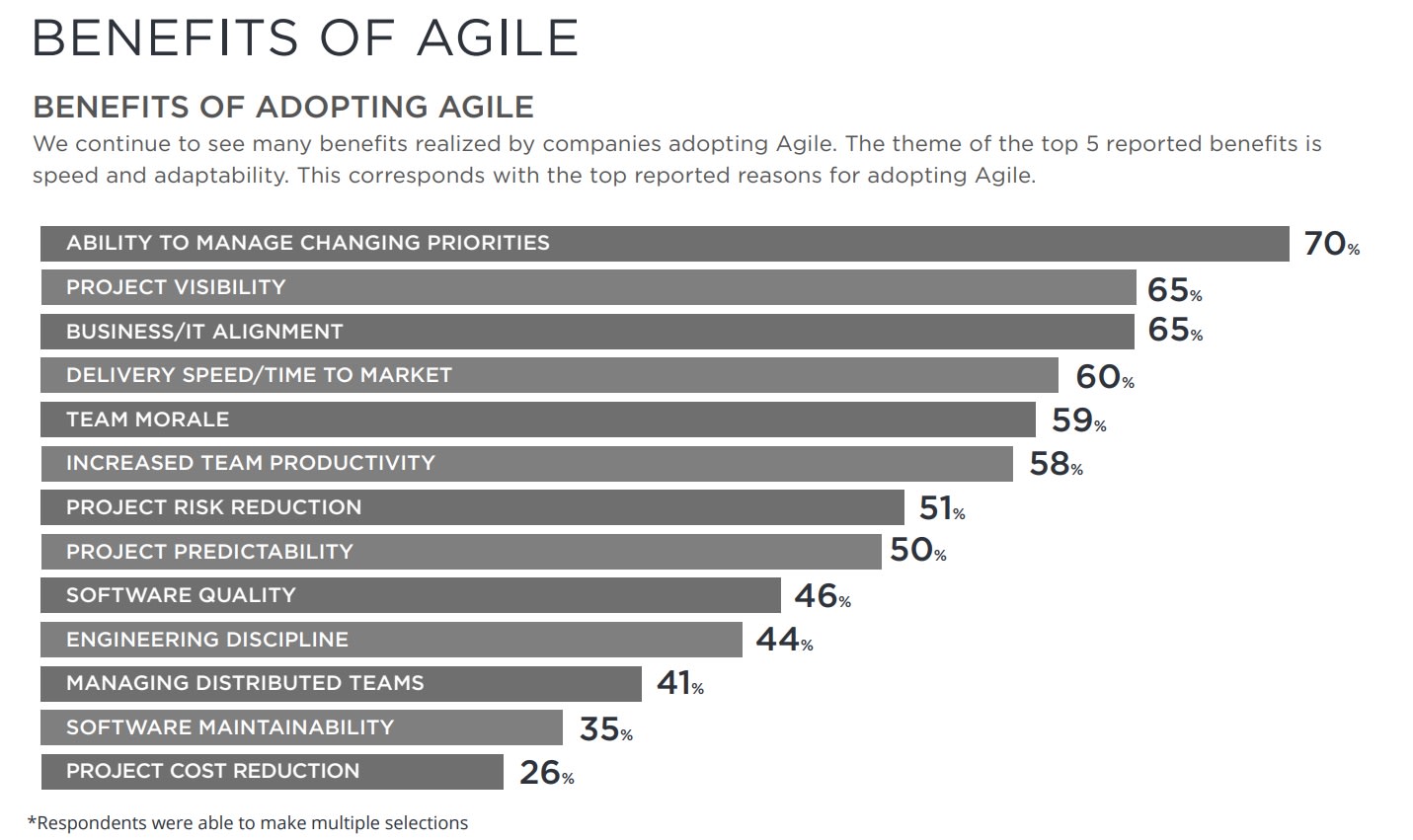
Let’s explore the top 5 benefits in a little more detail.
- Better ability to handle changing priorities because you use a shorter time frame in the planning stages.
- By keeping long-term plans high-level and revisiting them often, you keep the overall project goals more visible.
- Since it’s a core value and principle, facilitating business and tech collaboration is a priority.
- You speed up the time-to-market by skipping a prolonged planning phase and focusing on the essentials.
- With faster progress and a sense of involvement for everyone, team morale is much better.
But it’s not all good news. Our aim with this article is to provide a balanced, realistic account of Agile.
So let’s take a closer look at some disadvantages of changing to an Agile workflow.
Cons
What are the cons of going Agile? How can it negatively affect your projects and management processes?
The same SoA study highlights many common challenges with adopting Agile.
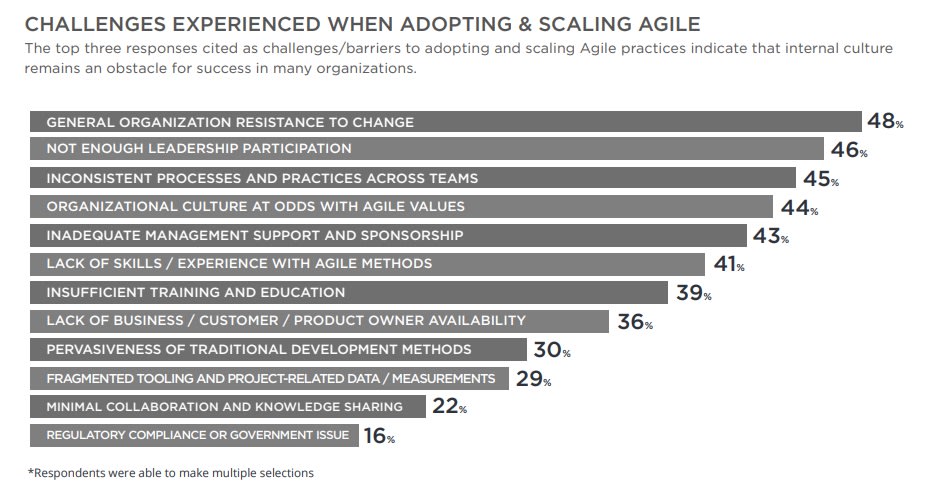
The first issue is a general resistance to change within the organization. If you’ve ever tried to introduce a new software tool or technique, you’ll know this all too well.
Trying to switch the overall philosophy and project management approach is a whole different ball game.
The next few challenges respondents highlighted relate to an inadequate Agile adoption process. Inactive leadership, inconsistent workflows, bad culture fit, and lack of training are just some of them.
It’s very challenging to adopt a new methodology beyond the scale of a single team.
But the Agile approach itself also isn’t without fault, no matter how smoothly you transition.
- It’s a struggle to get executives, customers, and other stakeholders involved regularly. They’re often used to a more intensive start-up period. It can be hard to bring them in every month.
- It can lead to inadequate collaboration and knowledge sharing between team members. Teams will tend to self-organize based on current skill sets. Beginners can get left behind.
- It’s hard to implement an Agile approach in highly-regulated industries. When a perfect process is a must, more up-front planning isn’t a bad thing.
What do these disadvantages mean to your team and company? Does it mean you shouldn’t use it at all?
Let’s take a look at different use cases for Agile and when to avoid it.
When to use Agile project management
By now, you should understand the basics of Agile and its pros and cons. But when is Agile the best choice for a project or company?
That’s what we’ll explore in this section.
First, let’s take a look at the industries and types of projects that companies use the Agile methodology for today.
Industries and use cases
According to the 2020 State of Agile study, technology and financial services are leading the charge.
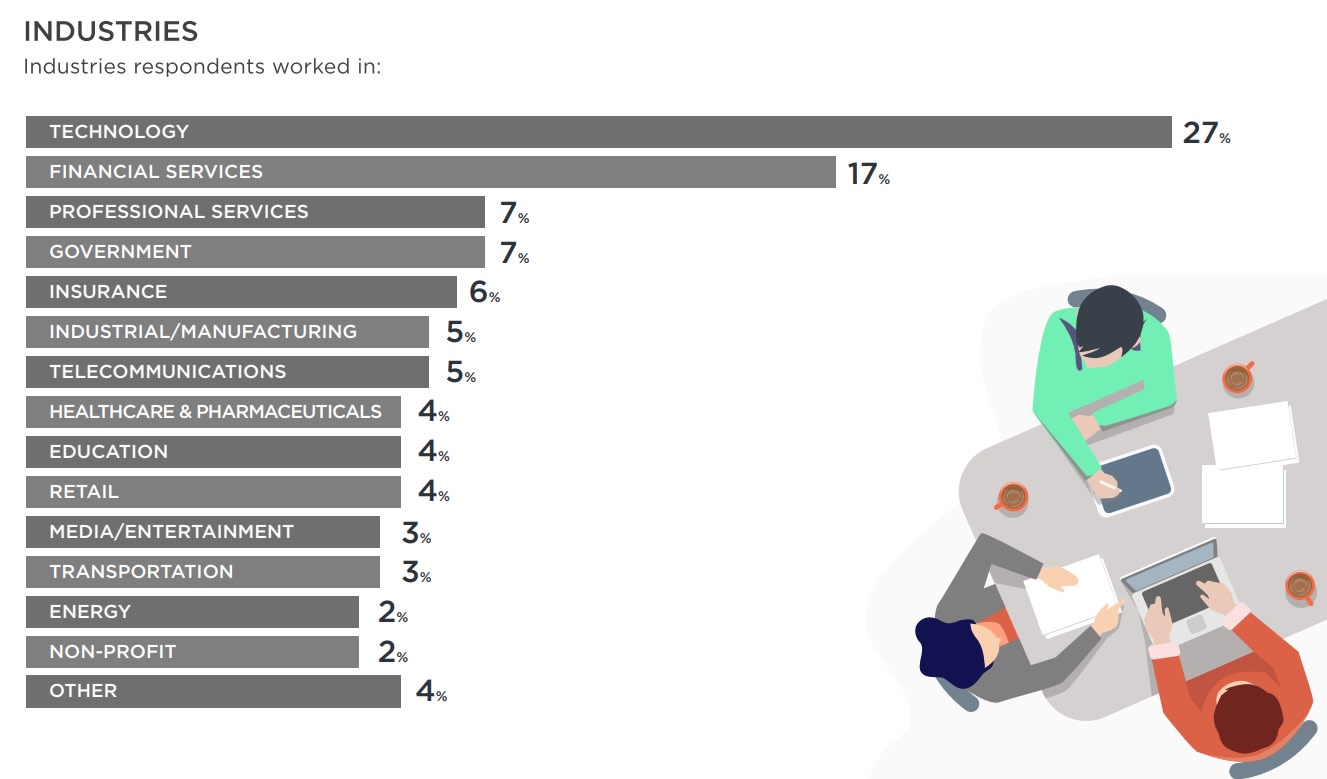
Together, these industries make up over 44% of all respondents. But there are very few major industries that aren’t represented at all.
The reason for that is simple. In 2021, every business is a technology business — to a certain extent. Chances are you use advanced software to track and monitor the process, even if you do all your business in brick-and-mortar stores.
When looking at use cases within companies, a Koblenz University study shows a clear pattern.
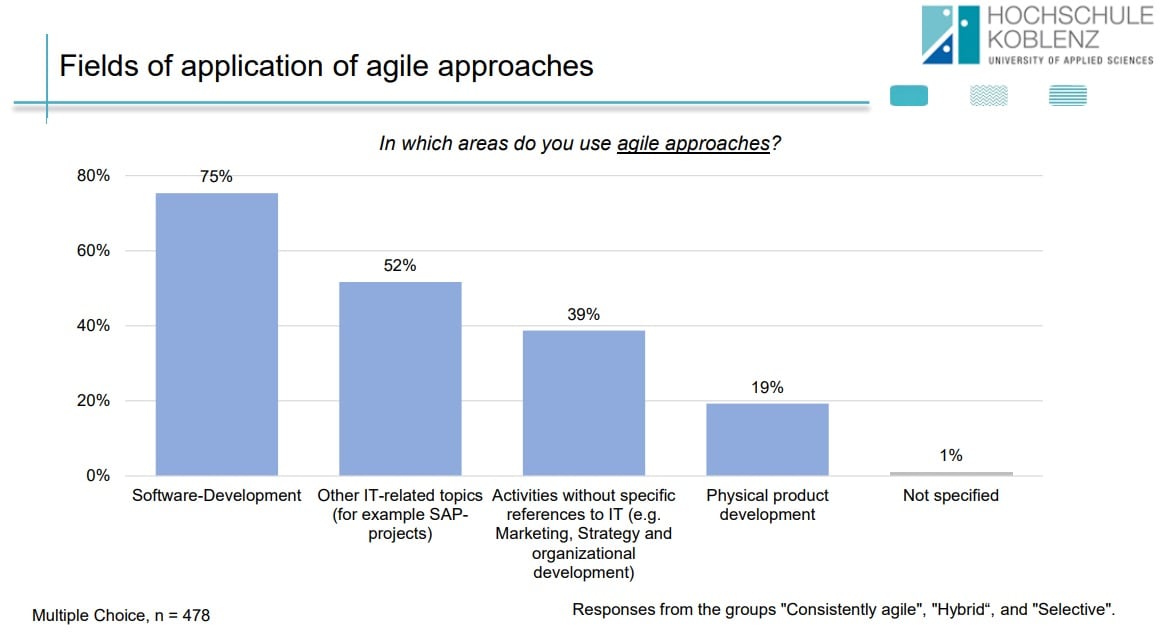
Agile software development is still the #1 use case for the philosophy. But it’s no longer the only implementation.
More than half of companies use it for other IT-related projects. Almost 40% use it for other, non-IT projects. And 19% of companies even say they use it for physical product development. Note that not all the polled companies make physical products.
Of course, the general usage patterns won’t help you make a final decision.
Rules of thumb for using Agile
In general, you want to use Agile for highly unpredictable projects that don’t need to follow a rigorous schedule or regulations.
When you’re developing anything new from scratch or transitioning as a company, Agile can work wonders. By shortening the work cycle, you can get to market faster while constantly adjusting course to align with market changes.
In an engineering or construction project where everything needs to happen at the exact right time, full-blown Agile isn’t a great idea. The same goes for highly regulated industries where you need government sign-off before starting.
But that doesn’t mean you have nothing to learn from the Agile values. For example, boosting business and project collaboration is a must in every company.
Agile project management examples: most popular frameworks
Let’s take a closer look at the most popular approaches to implementing Agile principles in real life.
What is the most popular Agile methodology or framework?
According to the 2020 State of Agile report, Scrum is the most-used methodology.
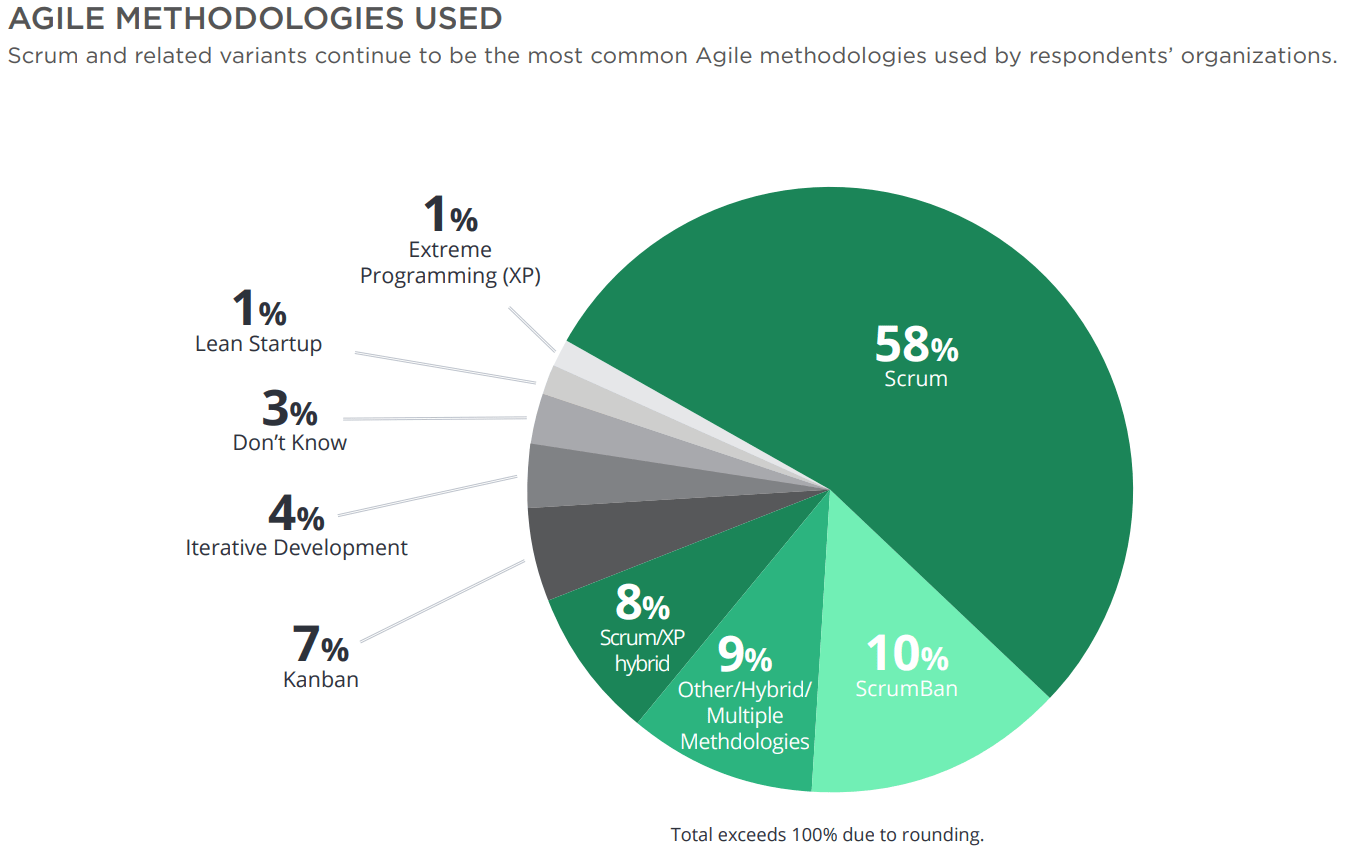
A whopping 58% of Agile teams use Scrum, and another 18% use a specific Scrum hybrid.
The closest non-hybrid option is Kanban, which only 7% of teams use exclusively. But many companies use it in addition to Scrum at the team level.
So let’s take a closer look at these leading frameworks. Is the popularity justified?
Scrum
Scrum is — by far — the most popular framework for implementing Agile at a team level.
In it, you break larger project teams into smaller Scrum teams of 3–11 people. This team includes the Product Owner — who represents the interests of the business — and the Scrum Master who works to minimize roadblocks that prevent work from getting done.
These individual teams self-organize and work in a Scrum sprint that lasts 1–4 weeks.
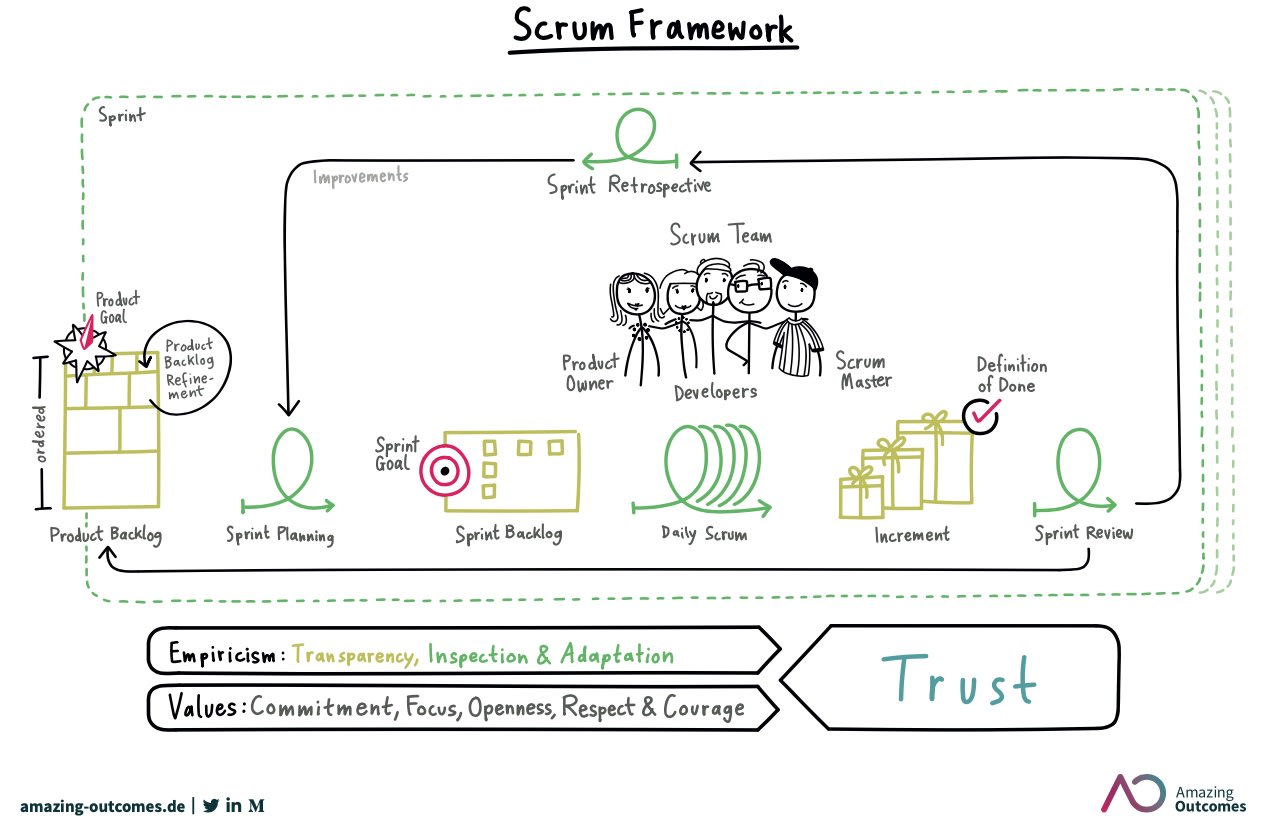
Instead of writing an in-depth project plan, the Scrum team reviews the “product backlog” before every sprint. The product backlog is a list of features the finished product needs.
The team prioritizes a few of them to work on in each iteration. Another unique aspect is that each sprint ends with a direct user test of the new product version.
Only if the user — internal or customer — says it helps them can the team move on.
This narrow and constantly changing focus leads to a hyper-productive but flexible team. Instead of prolonged tunnel vision, it only lasts as long as the sprint.
There’s a reason the framework is named after a sports phenomenon.
Like in sports, the team focuses 100% on winning each “game.” Then, after each game, they meet with coaches — or in this case, stakeholders — to improve their strategy going forward.
Read our guide on implementing Agile project management with Scrum to learn more.
Kanban
Kanban is another Agile framework you can use to implement the values. Unlike in Scrum, there are no new team units or positions. Everyone keeps their roles, teams, and responsibilities.
Instead of working in sprints, in Kanban your teams work together to improve the product continuously. You create a Kanban board that outlines a logical workflow for fixing issues or adding features.
Then, you involve everyone — regardless of rank — in creating to-do items for the board. You then continually prioritize tasks and assign them to different teams or individuals.
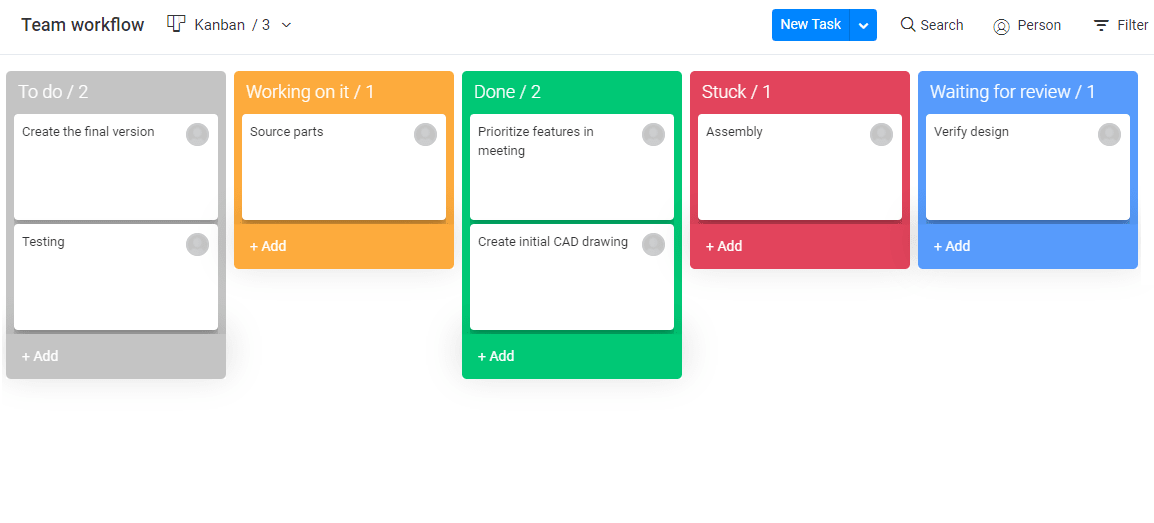
(With monday.com, you can easily create a Kanban board for any project in a few clicks.)
What Agile looks like in real-life in 2021: Mortgage Center
Many think that Agile is only useful for software development, but that’s just no longer the case. A wide variety of companies and teams in a wide range of industries use it in 2021.
For example, the Mortgage Center in Michigan uses it to manage a team of over 80 members.
Before moving to monday.com, this is what their Agile workflow process looked like:
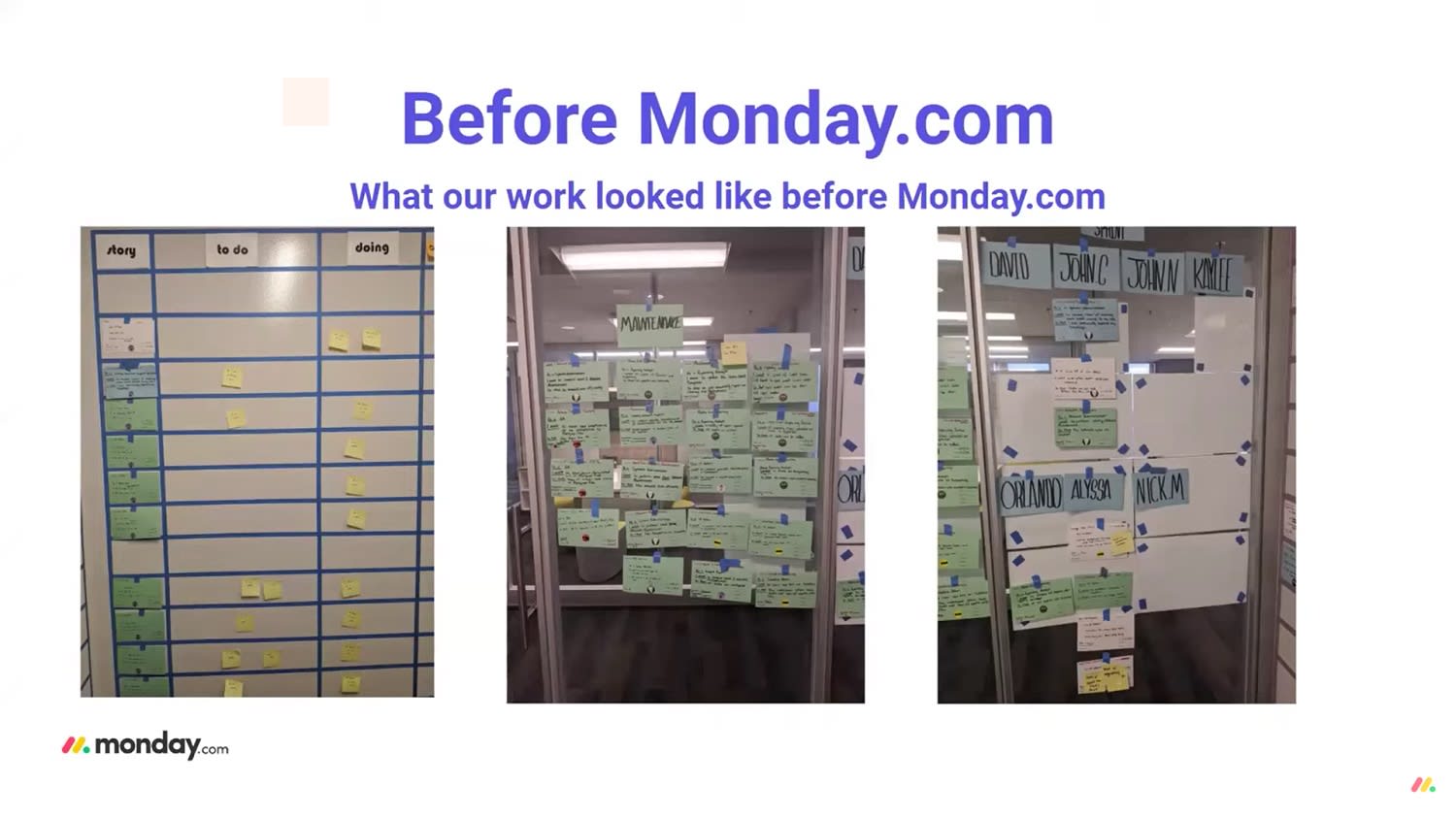
With over 80 members, the individual cards become so small you can’t see what’s on them from a distance — look at the massive capitals on the name cards. The whiteboard can work as a project management tool in some scenarios, but it has its limits.
After switching to monday.com, everything changed. Now, they can easily use and customize templates to manage their whole Agile workflow.
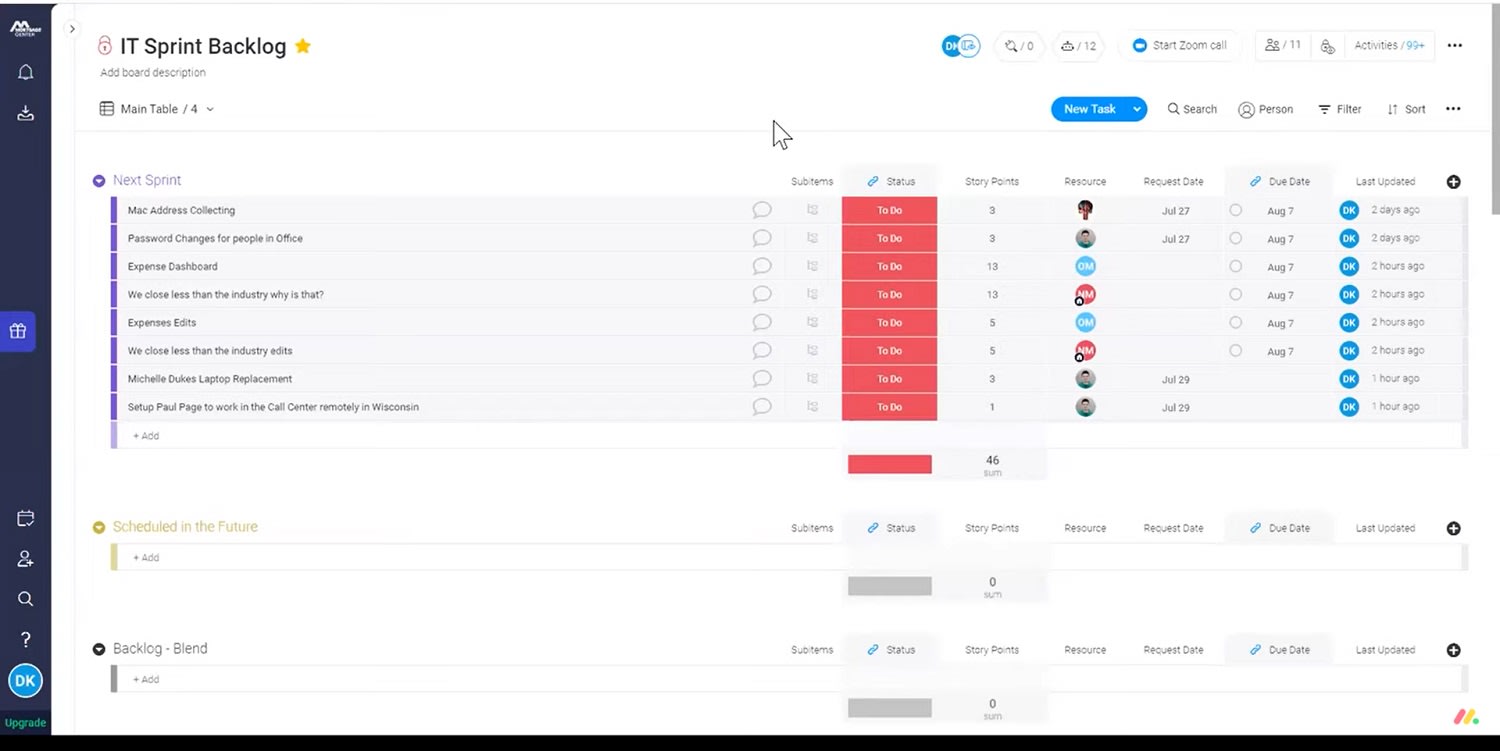
As a result, the team saw numerous benefits:
- Clear ownership and accountability through color-coded shared Scrum boards
- Significant time-savings in sprint planning meetings
- Better communication outside of meetings
- Ability to work remotely
If you want the full story, you can watch this video where Diana Kosut, Scrum Master and Project Manager at Mortgage Center, breaks it all down.
Scaling Agile beyond a single team
Transitioning a single, tight-knit group into an Agile team is easy. But scaling beyond the team level is a challenge even in ideal conditions.
Not only is the whole organization resistant to change, but the scale of the change is also massive. You don’t just need to change how your staff works — you must transform how everyone thinks.
And that’s not a simple task. You can’t just hire an Agile project manager and clap your hands in relief. It’s not that easy.
Thankfully, you don’t have to totally start from scratch. Some Agile frameworks — known as scaling frameworks — aim to solve this issue.
According to the Scaled Agile Status Quo (2020) study, around a third of Agile companies use a scaling framework.
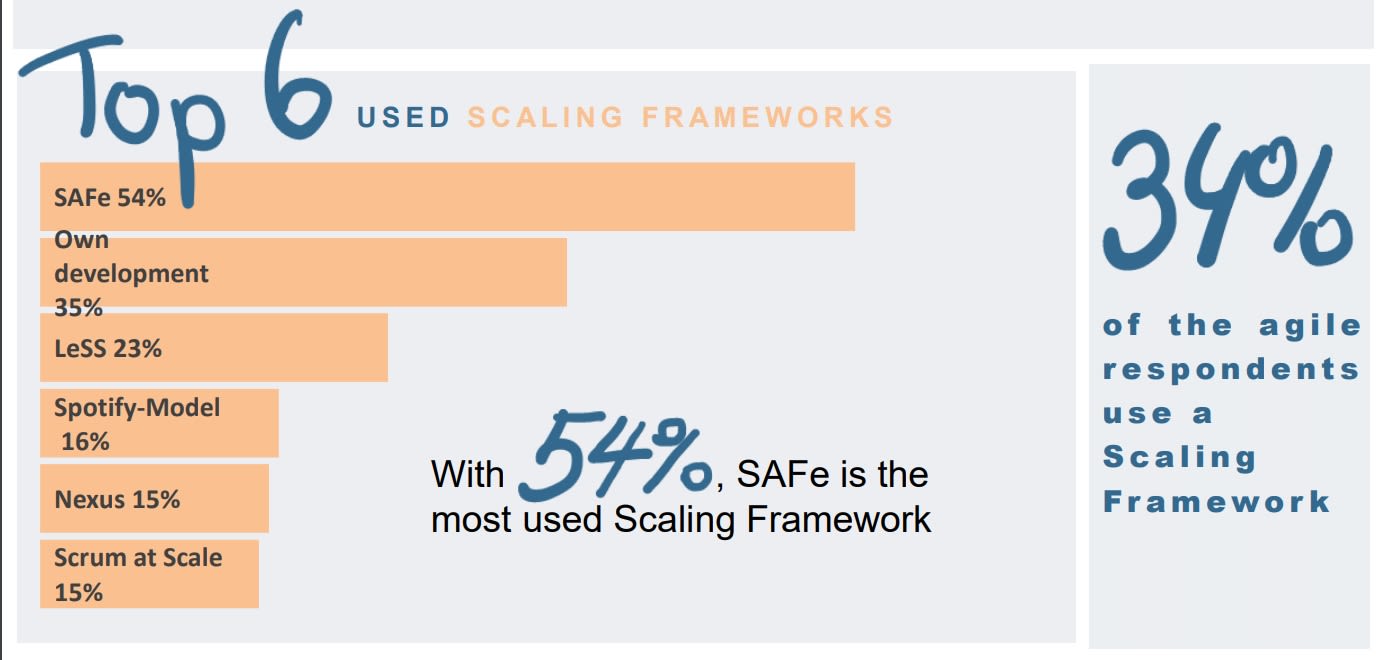
And of these, 54% use SAFe — the Scaled Agile Framework — to go beyond the team level.
It mixes many methodologies and lays out concrete processes for managing multiple smaller Agile teams and projects.
Read our guide — linked above — for step-by-step instructions on how you can use it to adopt Agile at scale.
How monday.com makes the Agile transition smoother
Want to know the secret to making Agile adoption smoother in 2021? Use Agile project management software.
If the software you use doesn’t complement the more complex, circular workflow of Agile, the transition will be that much harder.
monday.com gives you the flexibility, customizability, and integrations you need to build your perfect platform from the ground up.
Create a reliable, shared platform that integrates data from multiple apps and tools.
A basic project management tool won’t cut it here. With monday.com, you’ve got access to 40+ built-in integrations and our powerful automation builder.
That can help you bridge the gap between different departments and teams that rely on various apps.
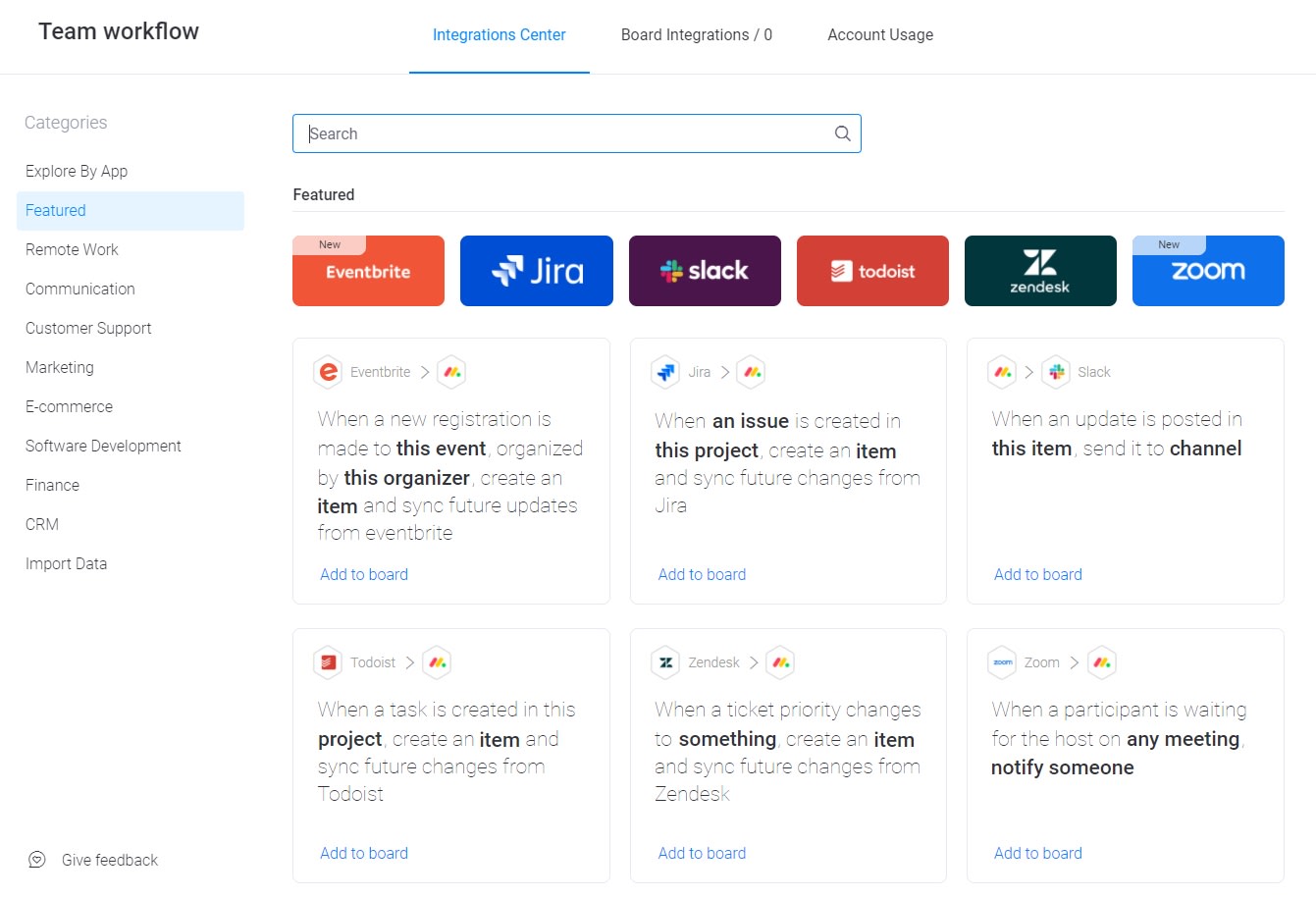
For example, you can bring together the support team that uses Zendesk and the development team that relies on Jira. By eliminating that silo, your developers can spend more time on the features and bugs that your customers care about the most.
And that’s only scratching the surface of what you can do with monday.com. With our automation builder, you can evolve your workflow.
Eliminate unnecessary manual steps wherever possible. For example, when a work item’s status changes to code review, you can automatically notify your quality assurance team.
There’s no need for anyone to interrupt their working day to grab hold of someone through Slack or email.
Work with a shared, real-time product roadmap.
monday.com also makes it easy to create and maintain an up-to-date product roadmap. Use and customize the template to start planning the future of your product.
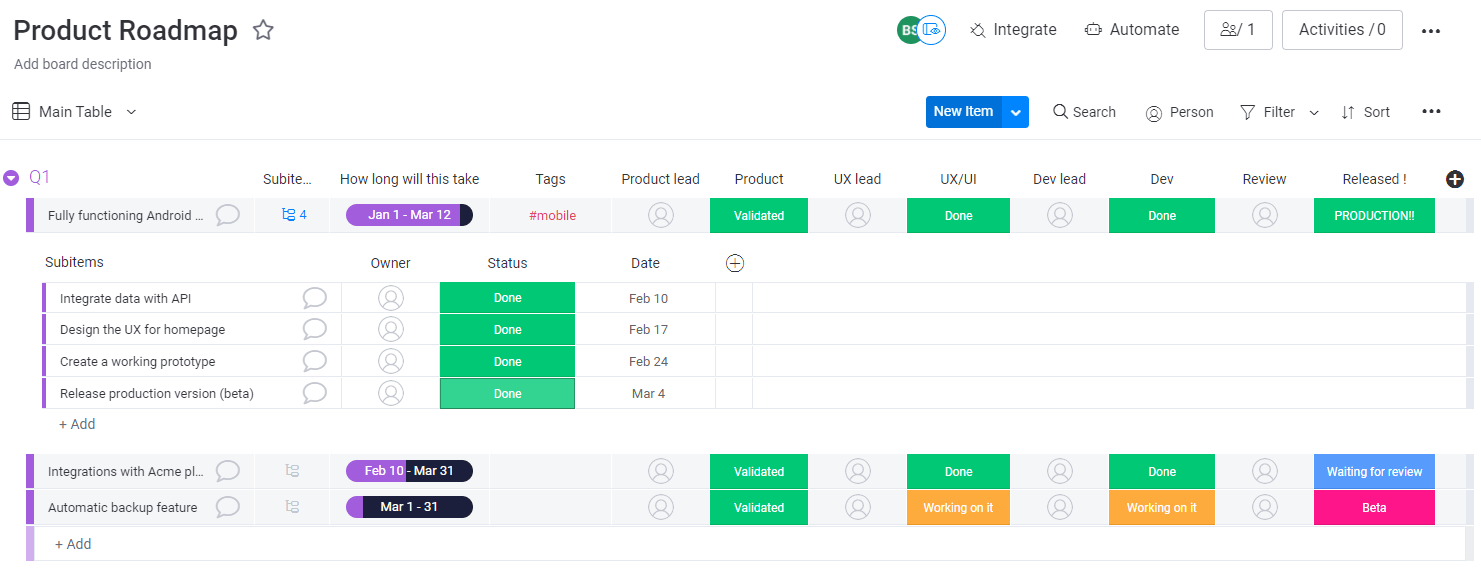
You can then connect items on the board to relevant sprint activity statuses. The roadmap will automatically reflect whether certain features are finished or not.
That gives your customers and team members a good insight into the progress you’re making.
Let stakeholders contribute directly to the product backlog.
Managing projects isn’t something you can do in a vacuum. A core Agile principle is to involve external stakeholders, like customers, in the process.
With monday.com, you can easily give different levels of guest access to various stakeholders. For example, you can assign a VIP client or project sponsor the ability to add and edit features.
It makes it easier to meet and collaborate on the backlog, as you can do so over phone or Zoom calls — yep, we’ve got an integration for that — rather than having to meet in person.
Use custom templates to plan your iterations or sprints.
Instead of messy whiteboards, you can make work assignments super clear with a digital sprint board.
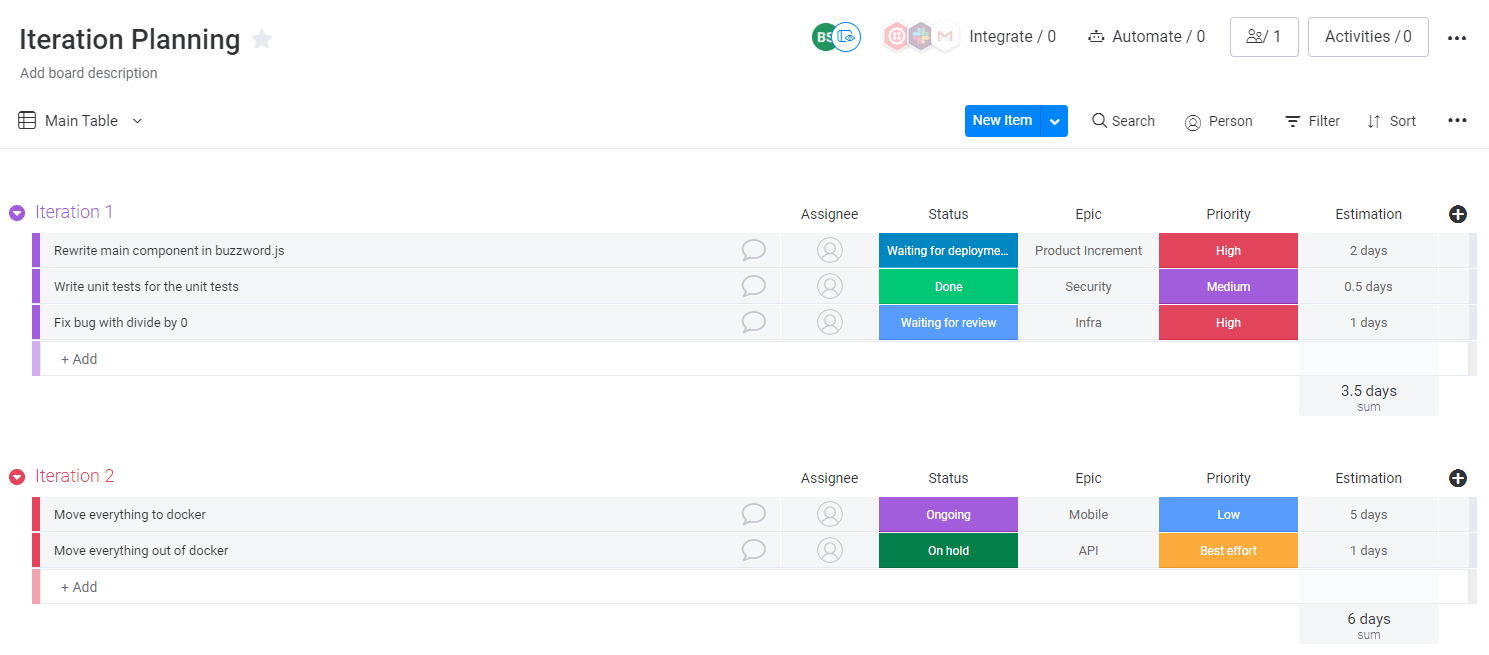
Color-coded item statuses, priorities, and assigned owner columns leave no room for doubt. You can use and customize our ready-made templates to suit your unique Agile process.
Get a live, high-level overview with connected dashboards.
monday.com also lets you build custom dashboards. You can combine data from multiple sources to highlight what you care about.
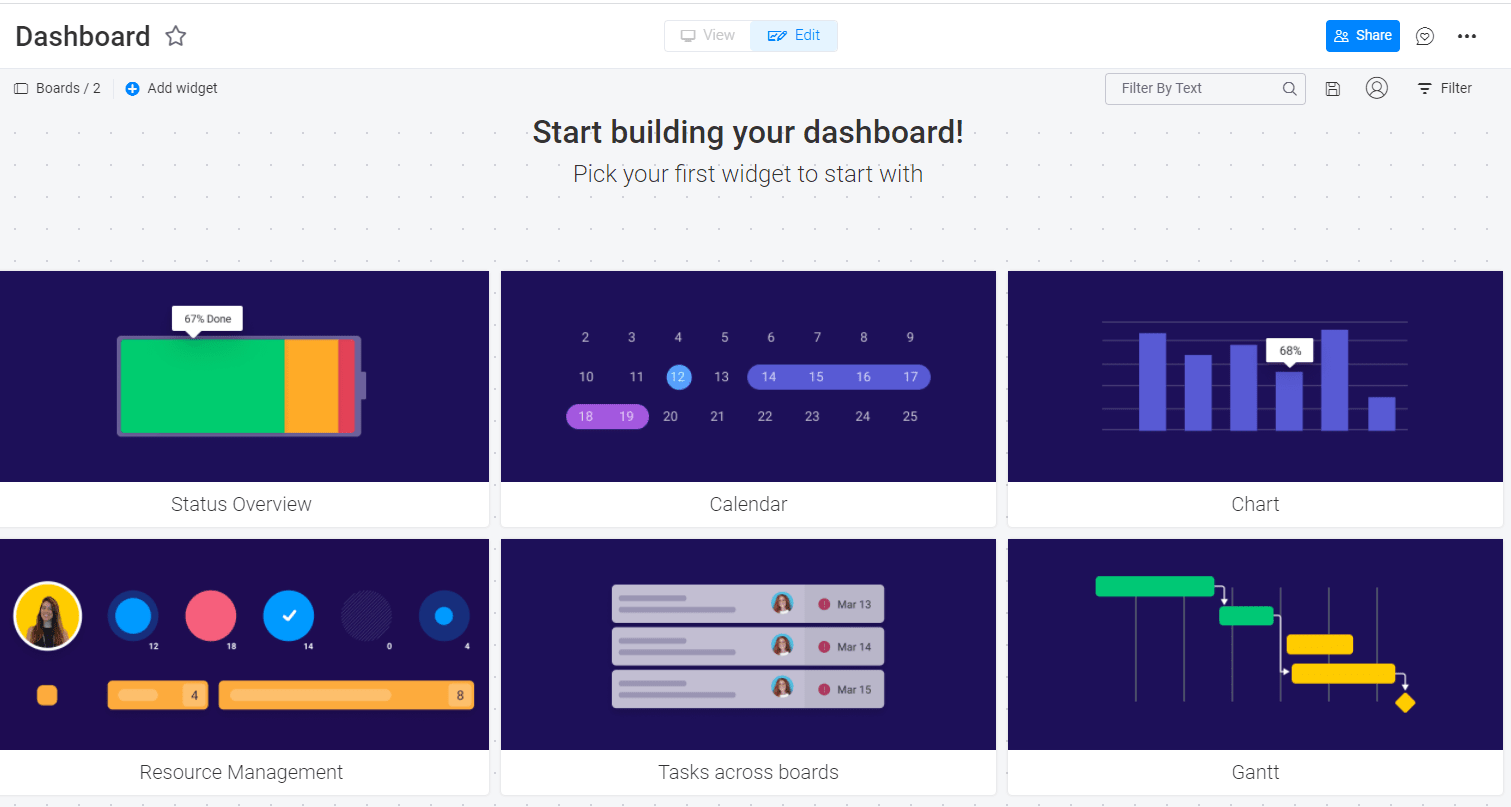
With our widgets and drag-and-drop editor, you can set up your ideal dashboard in a few minutes.
Organization-wide Agility requires a robust foundation
After reading about Agile project management’s pros and cons, examining examples, and the latest research, you may have decided that it’s the right approach for your business.
In fast-moving industries, where speed and flexibility are crucial, it’s a great option. You can also use it for highly unpredictable projects where you’re breaking new ground.
But if you truly want to transform your entire organization, not just a project team, you need to commit. Without the right foundation, you’ll never make the change stick.
Use monday.com and our ready-made project roadmap template to start off on the right foot.
The post What is Agile project management: when and how to use it appeared first on monday.com Blog.
Leave a Comment
You must be logged in to post a comment.







